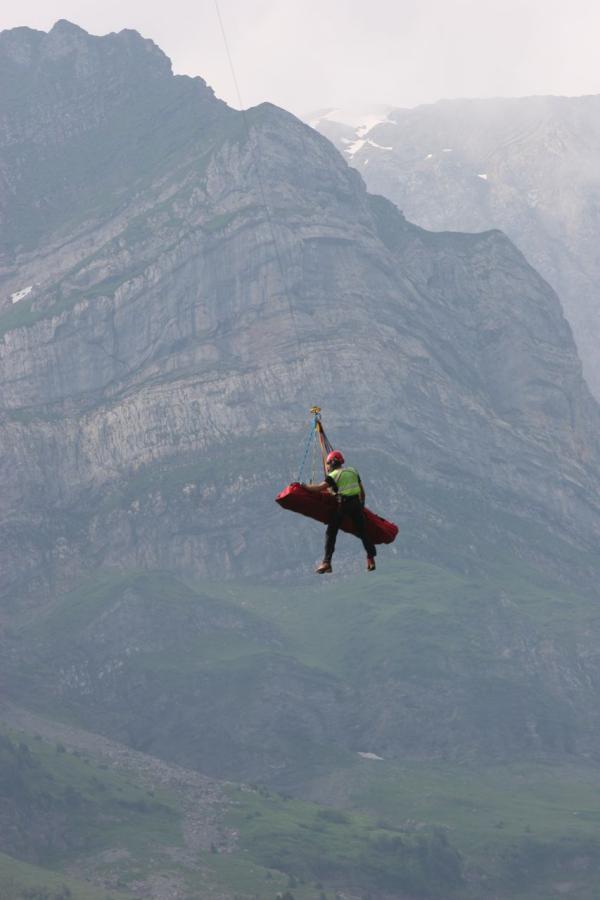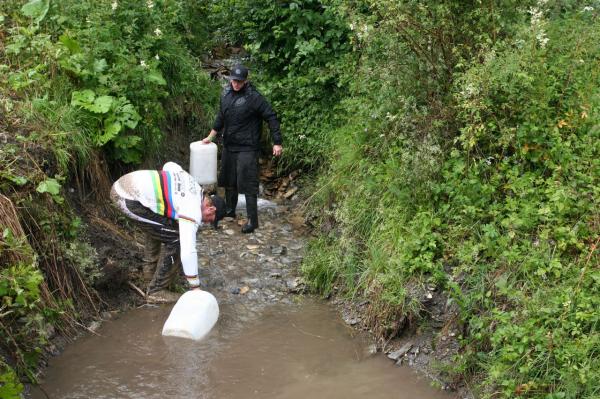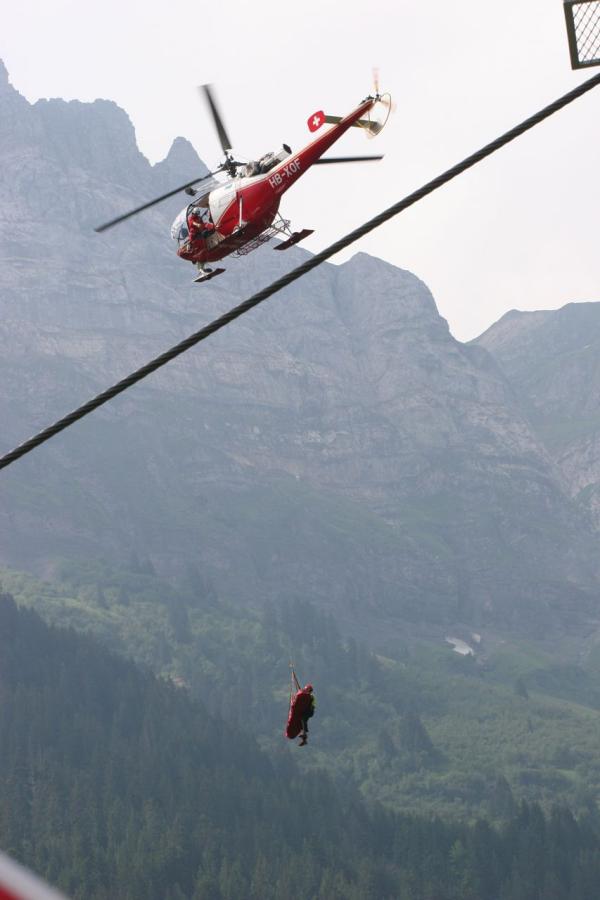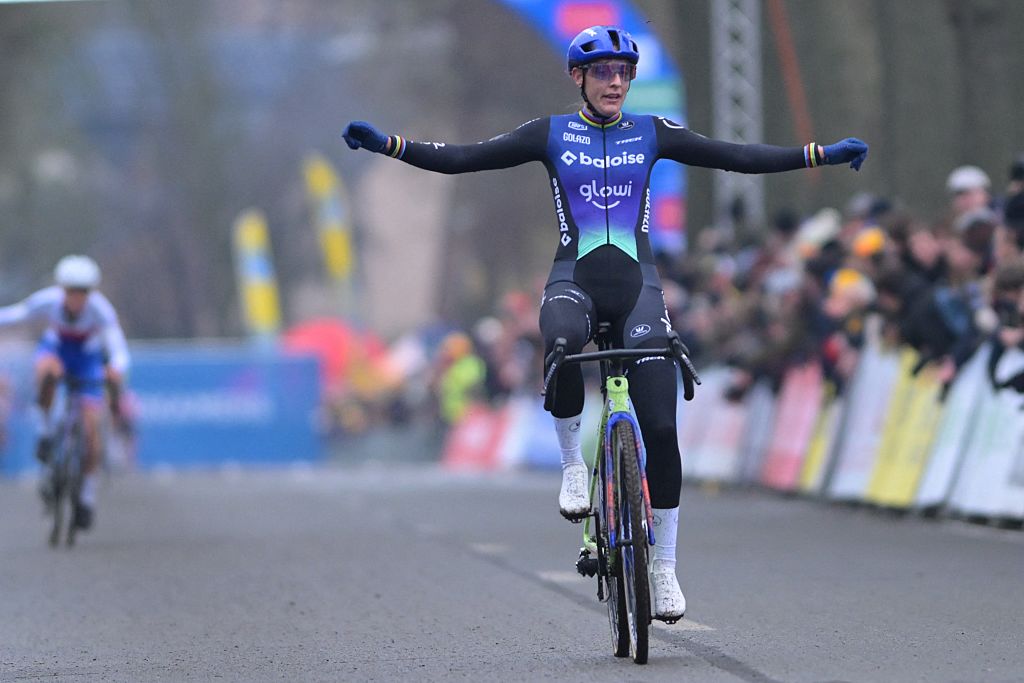Muddy, slick conditions challenge racers at Champéry World Cup
Some riders airlifted off course after crashes on treacherous tracks



Conditions at the mountain bike World Cup in Champéry, Switzerland, tested racers' patience and bike handling abilities this past weekend. Heavy, sustained rains leading up to the final downhill and cross country events meant riders were forced to battle thick mud and slick tracks. It was worst for the downhillers, who raced Friday and Saturday and experienced many crashes with some riders being airlifted off the mountain following the most severe incidents.
The rain, which had turned the steep 1,500-metre course into a slippery mudslide during qualifying, finally backed off for the finals on Saturday, but the damage had been done and, in some ways, the drying conditions made things worse. As the thick mud began to dry, it clung to bikes and turned to the consistency of peanut butter, doubling the weight of bikes and slowing forward momentum to a crawl. Even in the dry, the downhill course is considered to be one of the toughest on the circuit.
"Plagued by bad weather all weekend the Champéry course looked more like a battlefield than a race track with the three days of heavy rain in the lead up to Saturday's finals not helping matters," said Dan Brown, the manager of downhill winner Gee Atherton's Commencal team.
"My run was far from great but I don't expect anyone's was down there. It was way more physical than qualifying with the mud making the bikes feel so heavy," said Gee, who now sits as runner-up behind Greg Minnaar (Santa Cruz Syndicate) in the World Cup standings after four of six rounds.
"It was so steep it ended up being one line, just get in the slot and ride," said World Champion Steve Peat (Santa Cruz Syndicate). "The track is steep and technical, with lots of tight turns, some good jumps, not too rocky, but plenty of roots came out. It was sticky in the finals due to weather conditions and it was very hard to carry speed anywhere. The track is so steep and in case of injuries, they must airlift people off the hill."
Some of the riders airlifted off the mountain for further medical treatment were Christian Wright during practice and Nico Vink during the finals.
The women struggled, too, in steep conditions on bikes weighed down heavily by mud.
The latest race content, interviews, features, reviews and expert buying guides, direct to your inbox!
"It was probably one of the toughest conditions and tracks I've had to race for many, many years," said veteran downhiller Tracy Moseley (Trek World Racing). "I found it hard to more than just get down the course and never felt like I was really racing, just surviving. I lost time with my crash and I'm disappointed but also relieved not to crash out completely. I look forward to Val di Sole (the next World Cup this weekend in Italy - ed.) where hopefully conditions will make it more of a race!"
"I decided to stay on my bike – once you crash on this track it's pretty much over," said World Cup leader Sabrina Jonnier (Team Maxxis / Rocky Mountain). " If you get mud on your gloves, you won't be able to hold onto the bars anymore, and if you lose your bike at the wrong place, it can disappear into the bush – there would be no way to get back to where you should start from – it's so steep in places. So I decided to go for a safe run – I went really slow – it was not fun at all. I would even say it was the worst run of my life."
The wetness had more time to abate before the cross country events on Sunday, but some must have wondered if they'd entered the wrong event upon having to run un-rideable sections of the course.
"The course was muddy and rooty, very challenging. It was hard for riders to find a clear line in many sections. Top calibre riders were forced to run many sections of the course, which created a lot of traffic," said Dan Proulx, the coach of the Canadian team at the World Cup.
See Cyclingnews' full coverage of the World Cup downhill and cross country rounds in Champéry, Switzerland.
Additional editorial assistance provided by Rob Jones.
Sue George is an editor at Cyclingnews. She coordinates all of the site's mountain bike race coverage and assists with the road, 'cross and track coverage.
